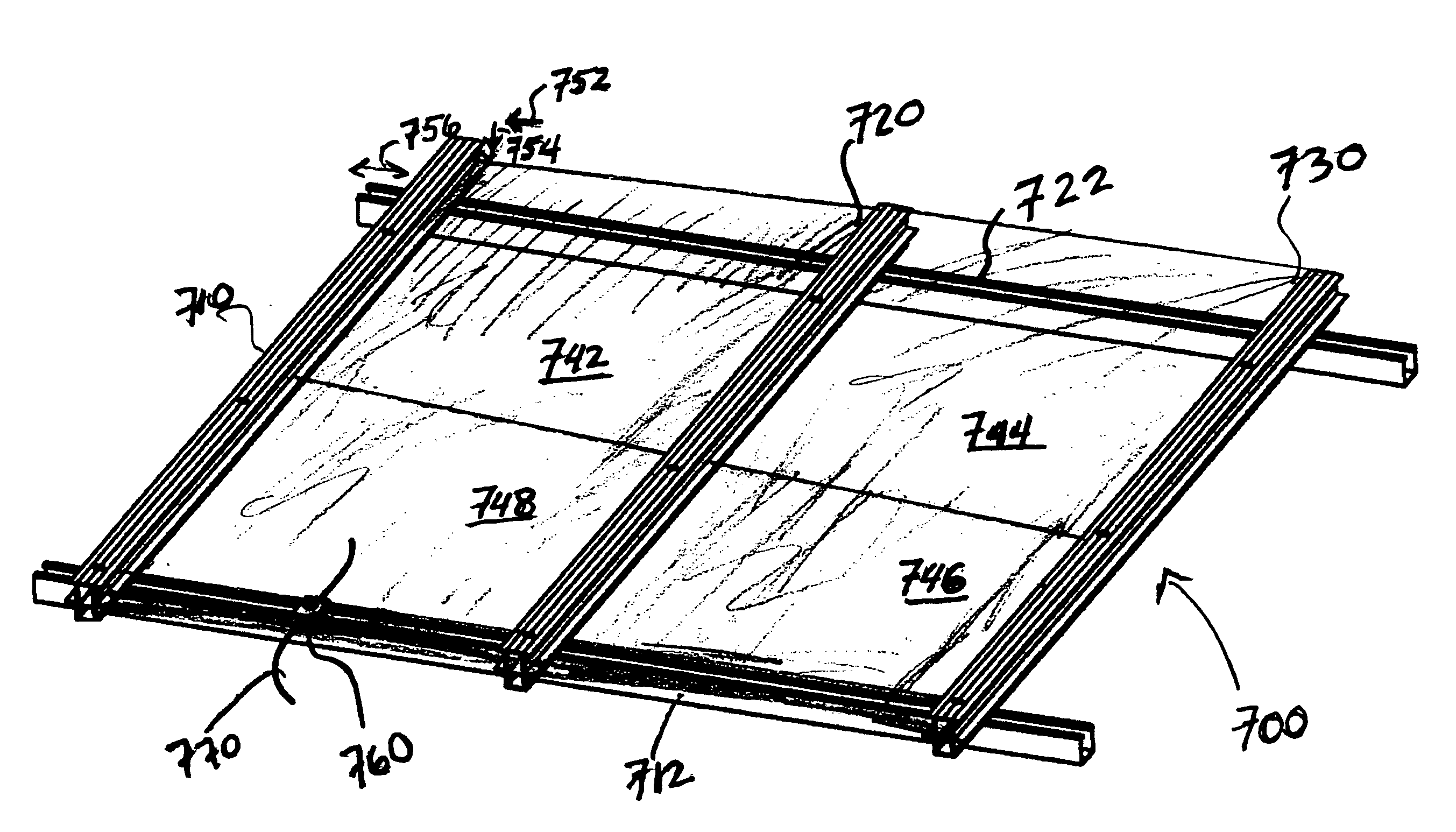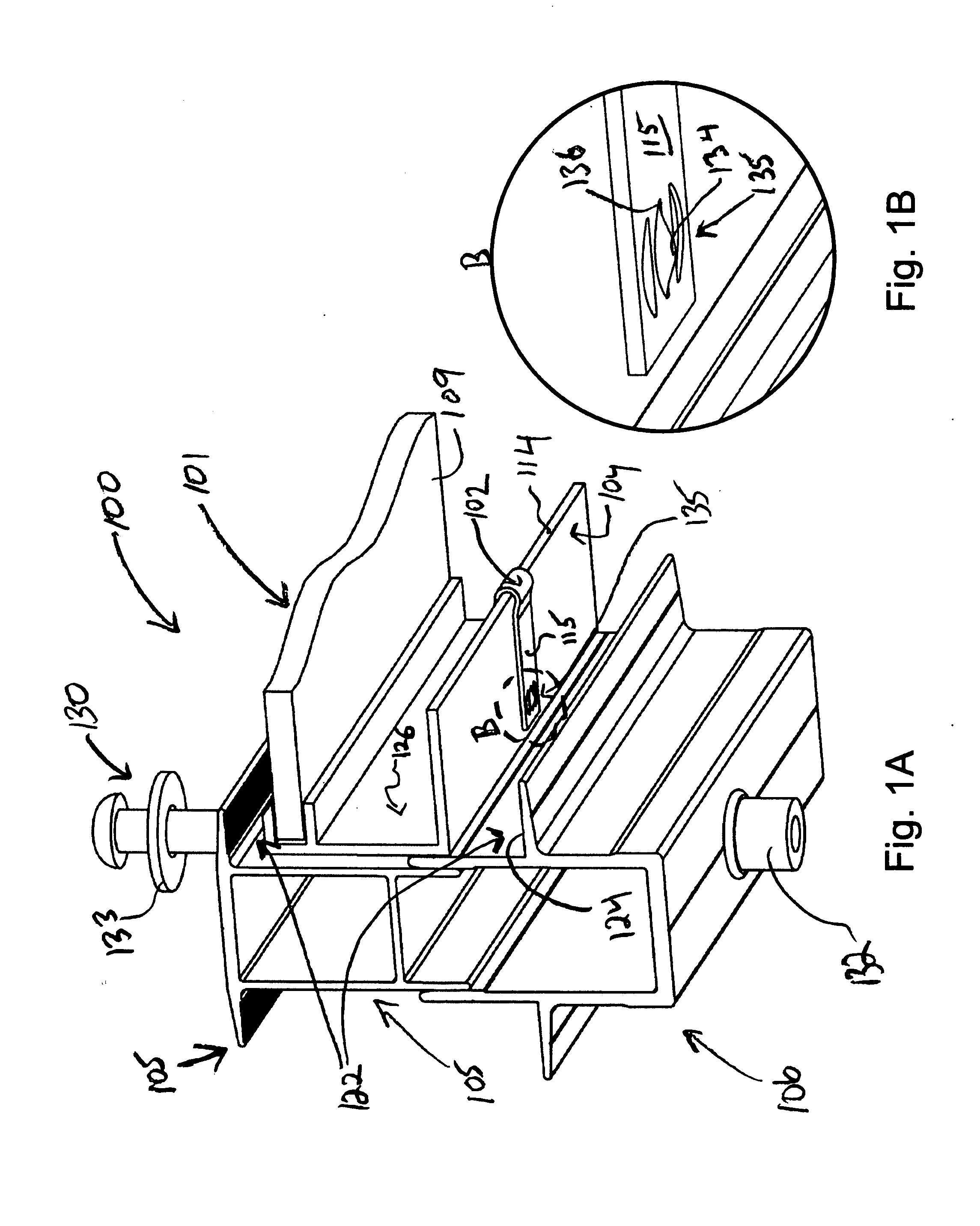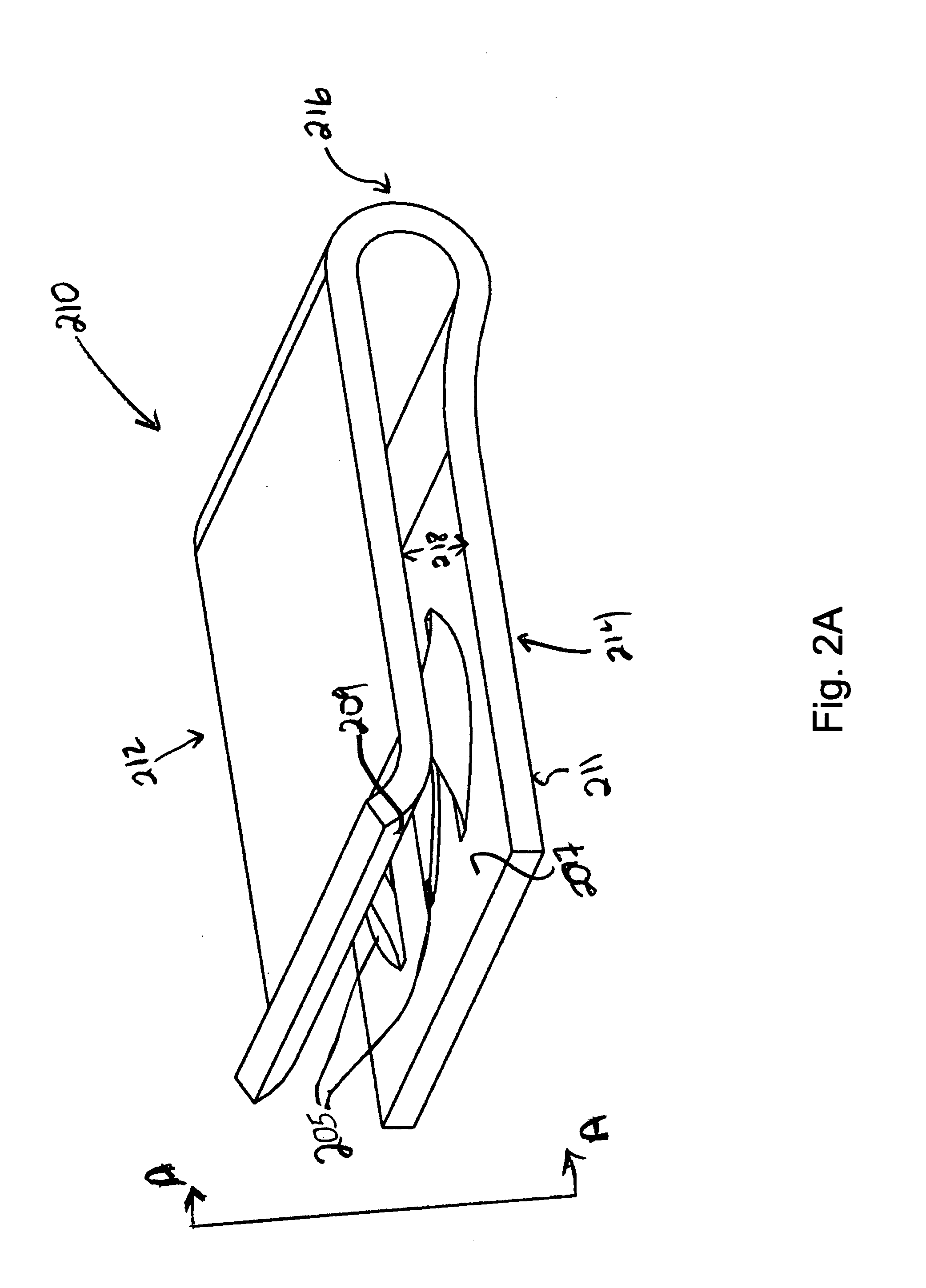Technique for electrically bonding solar modules and mounting assemblies
a solar module and mounting system technology, applied in the direction of heat collector mounting/support, connection contact member material, lighting and heating apparatus, etc., can solve the problems of difficult handling and assembly on the roof, and the current method of installing proper bonding devices for photovoltaic (pv) modules and other types of solar modules is both expensive and time-consuming
- Summary
- Abstract
- Description
- Claims
- Application Information
AI Technical Summary
Benefits of technology
Problems solved by technology
Method used
Image
Examples
Embodiment Construction
[0016]Embodiments described herein enable use of conductive elements on mounting assemblies for solar modules, for purpose of creating bonding or grounding points. As described, embodiments provide that such conductive elements are included between the engagement of the solar modules and the rail assemblies or support structures that hold the solar modules in place. Conductive paths for bonding or grounding purposes may then be formed that require minimal additional steps in assembling the mounting assembly as a whole. One or more embodiments enable such bonding or grounding features to be incorporated into the solar module array with assembly steps that eliminate the need for running grounding / bonding elements as separate assembly requirements.
[0017]According to an embodiment, a mounting system is provided for an array of solar modules. The mounting system includes one or more rail assemblies that extend lengthwise in a first direction to support a plurality of solar modules that c...
PUM
 Login to View More
Login to View More Abstract
Description
Claims
Application Information
 Login to View More
Login to View More - R&D
- Intellectual Property
- Life Sciences
- Materials
- Tech Scout
- Unparalleled Data Quality
- Higher Quality Content
- 60% Fewer Hallucinations
Browse by: Latest US Patents, China's latest patents, Technical Efficacy Thesaurus, Application Domain, Technology Topic, Popular Technical Reports.
© 2025 PatSnap. All rights reserved.Legal|Privacy policy|Modern Slavery Act Transparency Statement|Sitemap|About US| Contact US: help@patsnap.com



